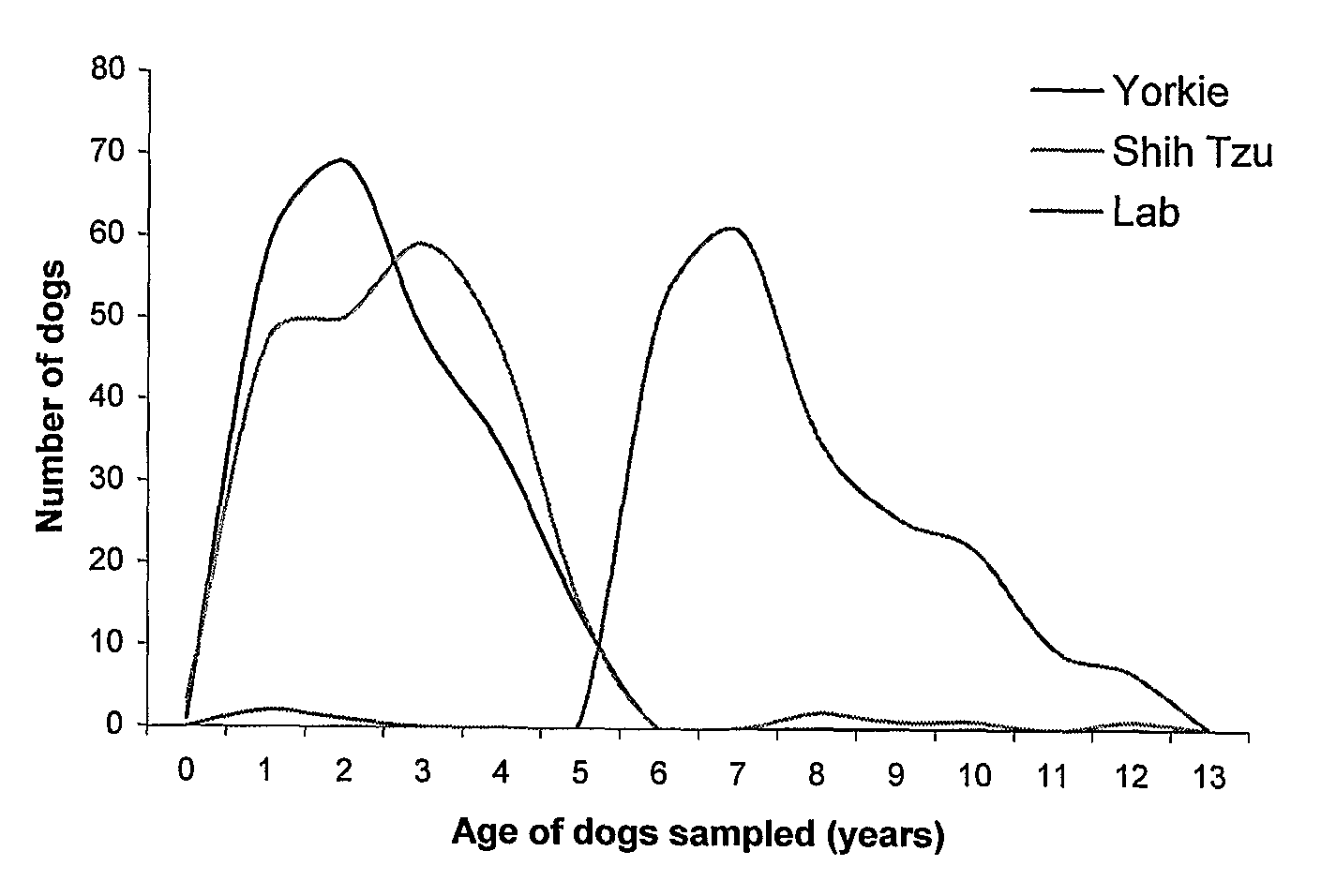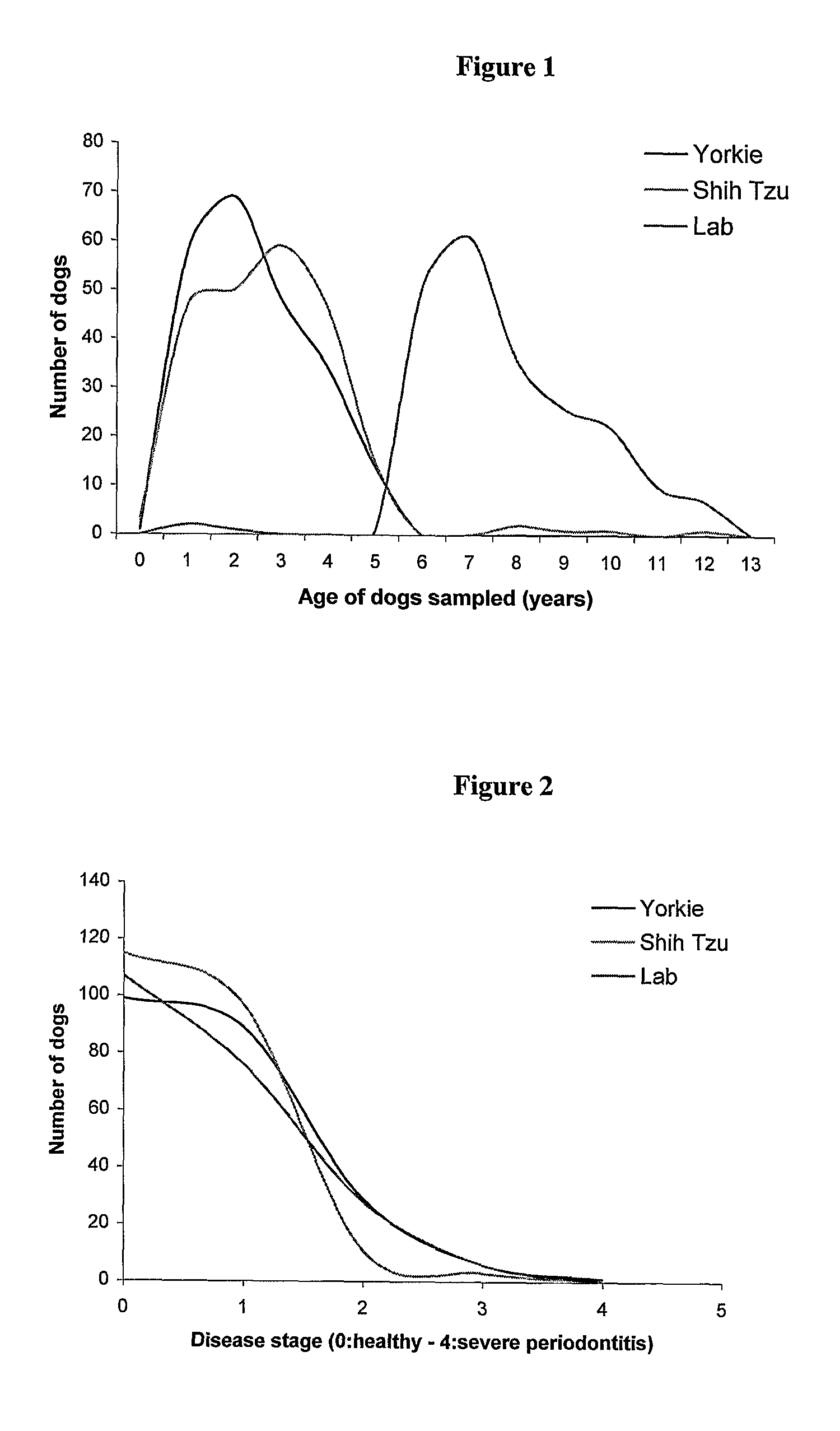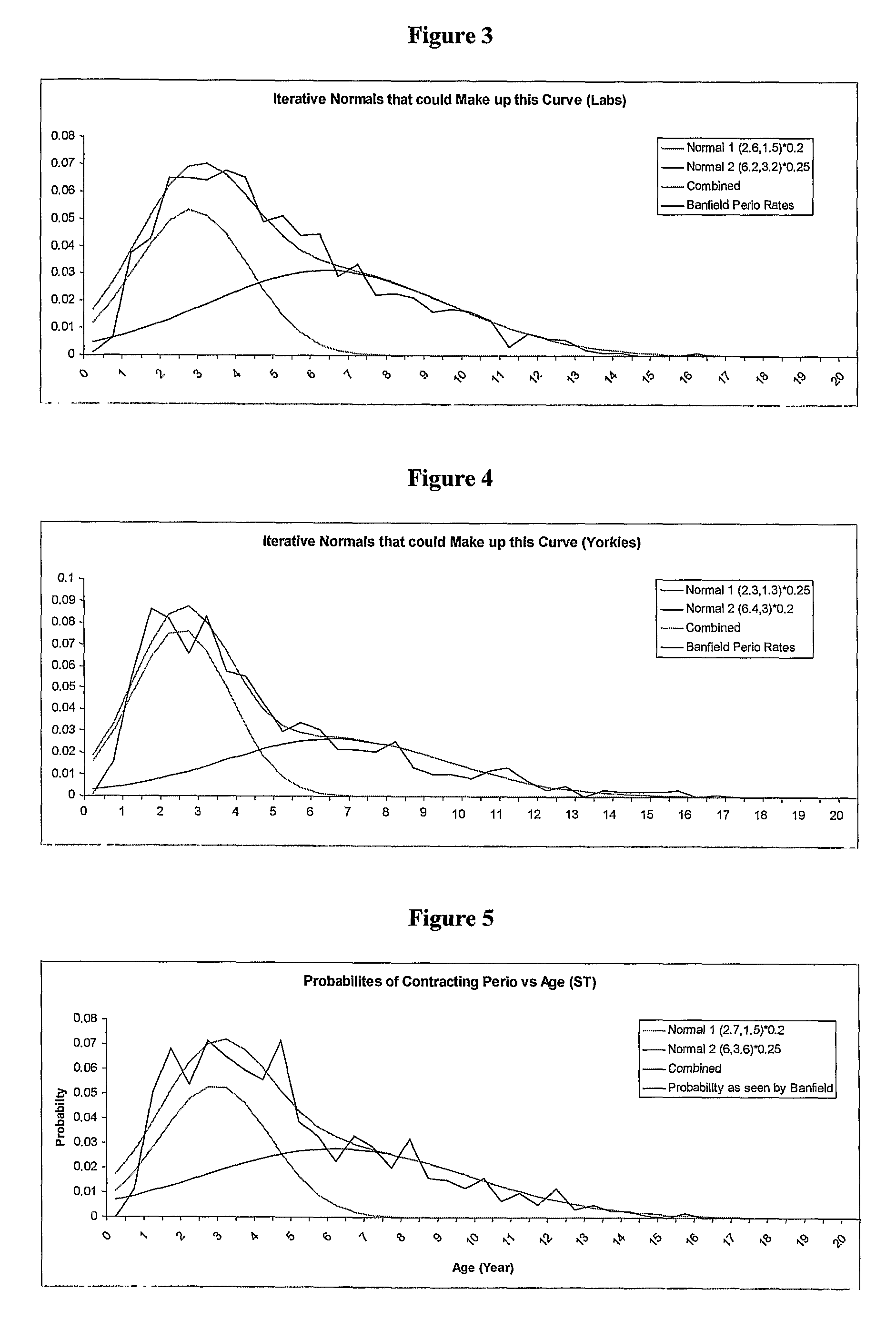Dog Periodontitis
a periodontitis and dog technology, applied in the field of dog periodontitis, can solve problems such as subsequent exfoliation, and achieve the effects of preventing or and reducing the risk of periodontitis
- Summary
- Abstract
- Description
- Claims
- Application Information
AI Technical Summary
Benefits of technology
Problems solved by technology
Method used
Image
Examples
example 1
Materials and Methods
[0167]The entire historical computerised PetWare database of Banfield, The Pet Hospital network was searched using owner geography (Virginia, Maryland, Pennsylvania, Florida or Georgia), breed and age as search strings to identify suitable client owned pets as candidates for the study. A telephone interview was conducted with each owner to confirm that the dog was eligible for the study based upon the inclusion and exclusion criteria defined below. Study-eligible dogs were scheduled to visit their local Banfield clinic and a conscious oral and physical examination was conducted using the protocol described. A dedicated trained dental technician performed all phenotypic assessments undertaken to ensure objectivity of the conscious scoring scheme used.
Study Recruitment Inclusion and Exclusion Criteria
[0168]Dogs were excluded from the study if they failed to qualify for the study using the following criteria (verified on presentation for Veterinary...
example 2
Testing the Model on Further Dog Samples
[0214]Model 1 was tested on further dog samples that became available and were appropriate for testing on. The test was performed on 17 Yorkshire Terrier, and 3 Shih Tzu dog samples. These samples comprised samples of dogs that since Example 1 was carried out, had subsequently developed periodontitis. The samples used were from dogs that were younger than 3.5 years of age, so that it could be reasonably certain that the dogs could be classed as susceptible. Other samples comprised samples from dogs that did not have periodontitis when Example 1 was carried out, and still do not. These samples were from dogs that were older than 5 years (with an age difference of more than 1 year).
[0215]Using this data 15 / 17 Yorkshire Terriers were correctly called (1 false positive, 1 false negative, 10 positive, 5 negative), and ⅔ Shih Tzus correctly called (1 false negative, 2 positive, no resistant).
[0216]The model thus had an accuracy of 85% in these reeva...
example 3
Determining Breeds that are Genetically Related to Yorkshire Terrier
[0217]The twelve SNP loci [SNP—01 to SNP—12] that were optimally typed to determine whether an individual dog is susceptible to early-onset periodontal disease were genotyped across over 4410 reference canine samples from over 130 canine breeds (signified by Kennel club pedigree data for most of the dogs). Only purebred samples were used. The number of samples used for each breed are set out in Table 7 in Example 4.
[0218]Nine of the twelve loci [SNP—01, SNP—02, SNP—03, SNP—04, SNP—05, SNP—06, SNP—07, SNP—08, SNP—10] were typed in a whole genome screen experiment with 1,536 selected SNP loci, across the canine genome. This was accomplished by choosing a sub-set of specific SNPs across the canine chromosomes from the successfully genotyped SNP loci from the 4,608 genome wide marker set typed in Example 1. This selection resulted in the selection of a set of prioritised SNP set that were provided to Illumina, Inc. for ...
PUM
| Property | Measurement | Unit |
|---|---|---|
| Time | aaaaa | aaaaa |
| Solar gamma radiation | aaaaa | aaaaa |
| Mobility | aaaaa | aaaaa |
Abstract
Description
Claims
Application Information
 Login to View More
Login to View More - R&D
- Intellectual Property
- Life Sciences
- Materials
- Tech Scout
- Unparalleled Data Quality
- Higher Quality Content
- 60% Fewer Hallucinations
Browse by: Latest US Patents, China's latest patents, Technical Efficacy Thesaurus, Application Domain, Technology Topic, Popular Technical Reports.
© 2025 PatSnap. All rights reserved.Legal|Privacy policy|Modern Slavery Act Transparency Statement|Sitemap|About US| Contact US: help@patsnap.com



